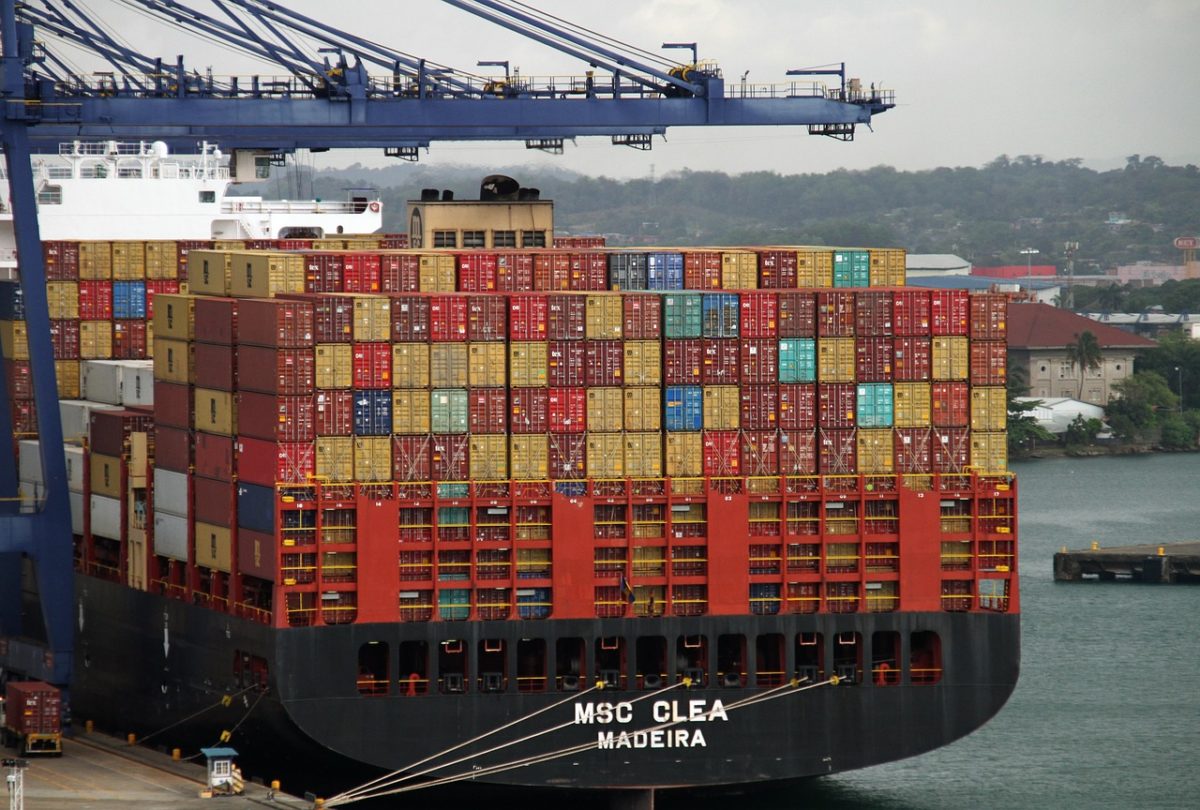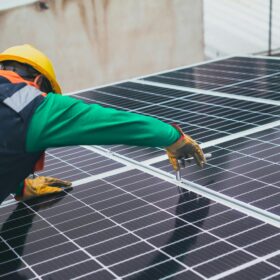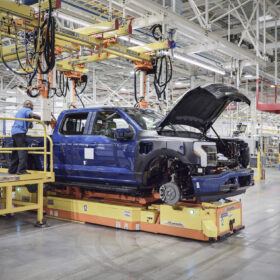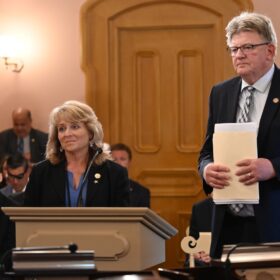The evolving tariff environment piles on top of ongoing uncertainties for the transition to renewable energy, said analysis from McKinsey. The consulting firm modeled a three-tiered scenario of tariffs over the next decade, finding that a “high tariff” path would knock down U.S. solar deployment considerably.
Under a “global tensions escalate” scenario, the firm estimated that solar installations would fall 9% in the United States through 2035, while energy storage installations would fall 4% over the ten-year span.
This “global tensions escalate” scenario assumes tariffs of 60% on all goods entering the United States from China and 20% on goods from other trading partners. The drop in installations under a high-tariff scenario is compared to a 2024-level “status quo” environment.
The firm expects 553 GW of solar deployment and 10% compound annual growth rates of 10% through 2035 in an accelerated, low-tariff environment, while it expects 504 GW and 9% compound annual growth rates in the “global tensions escalate” tariff environment. For battery energy storage, it expects 118 GW of deployment in the low-tariff scenario and 113 GW in the higher tariff scenario.
As of June 2025, China and the United States have paused the more than 100 percent tariffs between their countries. The United States applied an additional 30% tariff on all goods entering from China, and China has responded with a 10% tariff on all goods entering from the United States.
The Trump Administration also passed broad tariffs starting on April 5 that will apply to most countries at a rate of 10%. The tariffs apply to a wide range of imports, covering most products.
The 10% tariffs will not apply to “energy and energy products” as well as steel and aluminum, which were applied 25% tariffs in a separate executive order in February. Aluminum is used in solar frames and roof racking, while steel is an important part of ground-mounted trackers and construction materials.
SinoLink Securities said that aluminum frames were the most expensive solar panel manufacturing component in November 2024, representing 14% of total solar panel production costs.
Trump also expanded Section 301 tariffs on components imported from China in a February 2025 executive order. Solar energy resources, including solar polysilicon, wafers, and cells from China are now subject to 60% tariffs.
“In the United States, sustained high tariffs could delay penetration of renewable energy after 2035,” said the McKinsey report.
McKinsey forecasted that even with tariffs, the United States will reach a 68% clean energy mix by 2035, up from 49% today. “However, the sustained imposition of tariffs in the global tensions escalate scenario could stall the expansion of the share of clean energy beyond 2035,” it said.
McKinsey recommended that heading forward, clean energy original equipment manufacturers (OEM), energy producers and network operators should consider examining their portfolios, geographical footprints and their supply chains to identify vulnerabilities and strengths in the face of tariffs and to minimize their risks.
For OEM leaders, it recommended focusing on investing where the market is relatively insensitive to tariffs, stepping back where demand is poised to fall, and diversifying the supply chain.
For U.S. energy producers, it said United States face lower returns for clean technologies under tariff scenarios. Wind energy costs are less likely to be affected by solar, it said.
And grid network operators, in the United States and the could consider aligning their investments with energy producers, planning for industrial electrification over the long term, and continuing to invest in grid maintenance, said the report.
“Tariffs add uncertainty to the clean-energy landscape. In the broadest sense, our scenario analysis indicates that adoption of clean-energy technologies will likely take longer and cost more the longer tariffs last and the higher they are. Even so, we see that adoption of clean technologies will continue,” said McKinsey.
This content is protected by copyright and may not be reused. If you want to cooperate with us and would like to reuse some of our content, please contact: editors@pv-magazine.com.









By submitting this form you agree to pv magazine using your data for the purposes of publishing your comment.
Your personal data will only be disclosed or otherwise transmitted to third parties for the purposes of spam filtering or if this is necessary for technical maintenance of the website. Any other transfer to third parties will not take place unless this is justified on the basis of applicable data protection regulations or if pv magazine is legally obliged to do so.
You may revoke this consent at any time with effect for the future, in which case your personal data will be deleted immediately. Otherwise, your data will be deleted if pv magazine has processed your request or the purpose of data storage is fulfilled.
Further information on data privacy can be found in our Data Protection Policy.